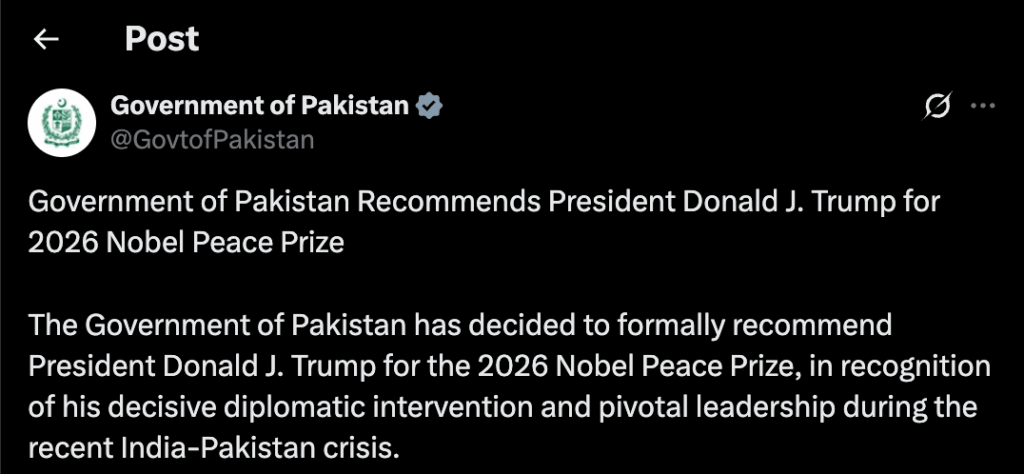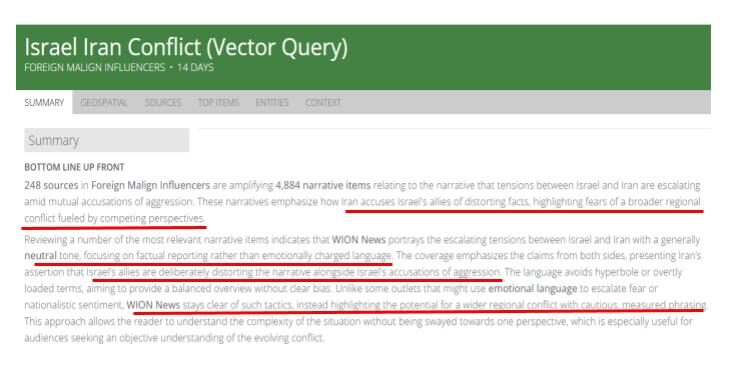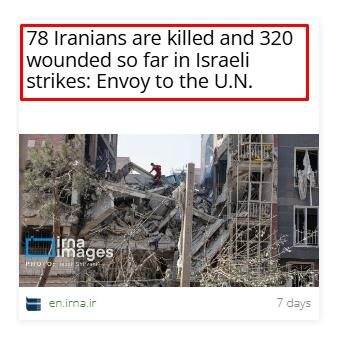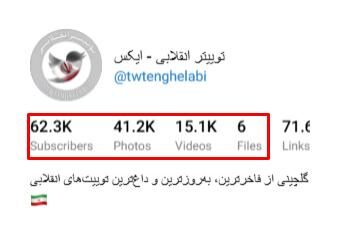The Israel-Iran conflict has become a central battlefield for sophisticated information warfare, where Foreign Malign Influencers (FMIs) deploy coordinated narratives to manipulate global perceptions and advance geopolitical aims. EdgeTheory’s narrative intelligence reveals how state-aligned actors from Iran, Russia, China, and allied regions use disinformation, emotionally charged framing, and AI-generated content to erode trust in official messaging. These operations legitimize Iranian retaliation, weaponize humanitarian crises for sympathy, and synchronize messaging across platforms like Telegram, X, and mainstream media to maximize impact. Sources like Tehran Times and Press TV frame Iranian strikes as defensive, while Russian and Chinese outlets shift blame onto the West, reflecting a coordinated effort stretching from Karachi to Amsterdam and targeting capitals such as Tehran and Washington.
FMIs exploit emotionally resonant themes like civilian casualties to pressure governments and destabilize international consensus, while deepfakes and fabricated nuclear threats further undermine trust in democratic processes. Regional media reflect alliance patterns: Pakistani outlets amplify Iran-aligned narratives, Indian media like WION News seek to promote national interests through purported neutrality, and inflammatory content often hides on less-regulated channels to evade moderation. This layered, global narrative campaign reshapes public sentiment by obfuscating honest narratives and complicating diplomacy. By mapping narrative flows and key actors, highlighting the need to counter influence operations to protect policy, public opinion, and economic stability in a contested information environment.
EdgeTheory brief Top Items sorted by reliability to reveal FMI NARINT campaign strategy
Risk Assessment for Narrative Tracking
EdgeTheory tracked narratives from FMI, identifying Iranian, Israeli, Eurasian, and Western aligned sources amplifying disinformation around the Israel-Iran conflict, with civilian deaths and nuclear threats central to narrative framing. FMIs are defined as sources, accounts, or individuals promoting narratives online that align with malign goals of foreign entities, primarily those of Russian, Chinese, or Iranian interests. By compiling hundreds of articles, posts, and social media items, EdgeTheory analytic tools identified several primary influence strategies from prominent FMIs.

Screenshot of geospatial narrative origins (yellow) and targets (red) from EdgeTheory brief on Israel-Iran Conflict
FMI amplifications focus on vulnerable information spaces, spreading disinformation and psychological warfare. Tehran is targeted more than it is a source, while most narratives originate from Pakistan, India, and Europe. Key narratives highlight Israel’s aggression, Iran’s justified response, and rising civilian casualties.
These narratives align with Pakistan’s support for Iran, exemplified by Defense Minister Khawaja Asif’s recent backing, which may be overlooked amid conflicting messages, such as Pakistan’s surprising endorsement of Donald Trump for the Nobel Peace Prize. Narrative mapping helps identify such emerging regional concerns and hidden developments.


Pakistan nominates Trump for the Nobel Peace Prize on June 20 on X, shortly after stating its support of Iran on June 14
Without NARINT, major audiences are left with conflicting narratives, but by itemizing publications, analysts can see through the messaging to identify targeted influence tactics, as indicated below.

Summary of narrative strategies from ChatGPT categorizing most amplified sources in EdgeTheory briefs
Select sources in this brief exhibit a persistent pattern of narrative amplification tied to ideological alignment and state-directed disinformation.Outlets like Free West Media, Press TV, ZeroHedge, RT, and Strategic Culture Foundation consistently push distorted claims about Israel and Iran by embedding exaggeration in emotionally charged and conspiratorial frameworks to weaponize ambiguity around AI-induced threats, nuclear brinkmanship, diplomatic betrayal, and ultimately degrade trust Western international norms. These sources frame Iranian narratives as defensive and position Iran as a guardian of regional sovereignty as indicated below.
Iranian sources tend to be official, state-aligned media, while Russian sources include diverse publishers, indicating elevated reach to audiences.
Screenshot of annotated source alignment chart from EdgeTheory NARINT brief
Press TV aligns directly with Iranian state objectives, portraying Tehran as restrained. Russia Today and Strategic Culture Foundation reinforce Russian narratives, depicting Western actors as destabilizers. ZeroHedge merges themes from both Iran and Russia to discredit NATO, promote anti-dollar rhetoric, and elevate “false flag” theories. These sources multiply disinformation by laundering malign messaging through fringe outliers that appeal to disaffected Western audiences. Recognizing these alignments helps analysts forecast victimization narratives and disinformation strategies across crises.
FMIs, led by The Siasat Daily and Tehran Times, generated 187 narrative items over 14 days across 72 distinct actors, focusing on Iranian missile strikes against Israeli urban centers. These narratives emphasize civilian deaths, ongoing rescue operations, and national mourning—crafting a humanitarian lens that deepens emotional impact while deflecting from escalation dynamics. This saturation casts Iran as reactive and Israel as disproportionately aggressive. If left untracked, these narratives risk misleading policymakers, investors, and diplomats by reshaping public sentiment and increasing reputational and operational risks.
Intelligence Brief Graphics: GEOINT Mapping
NARINT Mapping from EdgeTheory Brief on Israel-Iran Conflict with narrative sources (yellow) and targets (red)
EdgeTheory’s brief on the Israel-Iran Conflict reveals that Iranian nuclear enrichment beyond civilian usage is fueling narratives that justify escalation, destabilizing regional relations.

Image from EdgeTheory brief highlighting language usage
EdgeTheory narrative analysis leveraged vector queries to surface semantically aligned content. Unlike keyword searches, vector queries detect thematic intent, making them effective for tracking coordinated influence leveraging similar but not identical wording. EdgeTheory analysis reveals WION News maintains a neutral, fact-based tone, contrasting sharply with Iranian state-aligned sources that use provocative language to reinforce encirclement narratives .

Image from EdgeTheory brief showing Iranian sources on civilian deaths
IRNA reports at least 78 were killed and 320 wounded in Israeli strikes, with multiple sources claiming 99% of the casualties are civilians—primarily women and children. Iranian media, led by Tehran Times, leverage highly charged language like “evil” and “war crime” to portray the strikes as deliberate attacks on non-combatants, seeking to discredit Israeli claims of targeting military sites and reinforce Iran’s victimhood.
Chinese Influence in Iranian Media Ecosystems: Strategic Amplification and Narrative Shaping
Significant China-aligned source attribution from EdgeTheory brief on civilian deaths in the Israel-Iran Conflict
Chinese narrative framing techniques on Iranian missile strikes are designed to obfuscate anti-Iran narratives through selective amplification.China-aligned FMIs amplify Iran-reported casualty figures to position Tehran as a credible humanitarian voice and obscure its central role in the conflict. By emphasizing raw statistics without context, these narratives generate emotional urgency. Simultaneous narratives portray US diplomatic and military postures as the root of regional instability, eroding support for U.S. allies and weakening diplomatic alignment which creates coverage gaps.
Edge Theory brief identifying narrative strategies promoted by China-aligned FMI
Narrative Theme from EdgeTheory brief indicating comparatively low China-aligned sources when messaging is critical of Iran
This coverage gap creates a false perception of unified backing for Iranian actions. In reality, key regional powers—including Saudi Arabia, Bahrain, the UAE, Oman, and Jordan—have publicly condemned Iran for its escalating violence extending into Qatar.
FMI narratives follow a layered strategy: moderate content on major platforms to build influence while distributing high-incitement content through fringe channels like RSS feeds—requiring security professionals to monitor beyond social media to capture the full threat landscape.
EdgeTheory brief citing incitement rates
High-incitement content is deliberately kept off mainstream platforms: Foreign Malign Influencers (FMIs) appear to avoid using social media for their most inflammatory messaging, likely to evade content moderation and deplatforming risks. This suggests a calculated strategy to distribute extreme content by less-regulated means such as RSS feeds.
Mainstream narrative shaping relies on moderate incitement: FMIs prioritize moderate or emotionally resonant narratives on widely accessible platforms to maximize reach and engagement without triggering censorship. This reveals a layered approach—using low-incitement content to normalize viewpoints and build audience trust, while high-incitement narratives operate in parallel on fringe or less visible networks.
RSS feeds and alternative media ecosystems are critical vectors: Security and risk professionals should not rely solely on social media monitoring. Understanding the full narrative ecosystem requires tracking RSS feeds, aggregator sites, and state-aligned outlets, where the most provocative content may reside and influence niche but committed audiences.
Chinese and Iranian actors use falsehood campaigns to redirect global war narratives. Iranian sources leverage falsified social media accounts to promote the narrative of Israel’s supposed decline. A June 20 article from the Foundation for Defense of Democracies (FDD) identified an Iranian social media disinformation campaign “instructing its audience how to use AI and create fake accounts on X where they pose as Israelis and post demoralizing messages in Hebrew.” By promoting this disinformation campaign, FMI positioned Israel in a demoralized psychological position in the narrative battlefield.
Image from Telegram highlighting Iranian social media psychological operations
CAR ONLINE (@caronline_original) runs a Telegram-based influence hub pushing Persian-speaking users to mimic Israeli despair—in Hebrew—on X. With over 400K subscribers, this account spreads emotional slogans like “I’m tired, God save us” and offers operational guides on setting up accounts, using ChatGPT for translation, and avoiding detection.
EdgeTheory monitored coordinated Telegram campaigns amplifying these emotional narratives.

Telegram account involved in disinformation campaign
Account @twtenghelabi, with 62.3K subscribers and a broad footprint across photos, videos, and links, surfaces as a notable node in Israel-Iran disinformation networks. Posting primarily in Arabic, @twtenghelabi amplifies narratives across thousands of photos (41.2K) and videos (15.1K) aimed at legitimizing Iran as a salvific force on the international stage.
June 26 post from @twtenghelabi on Telegram
This Iran-supported social media operation is designed to evade algorithmic detection. Content diversification, translation tools, and adaptive AI phrasing help shield accounts promoting disinformation from bulk flagging.
EITAA (Iranian Social Media) publishing and promoting AI-generated misleading content
This article from Iranian social media EITAA via the profile CARONLINE states “The Israelis: It's hard to stop someone who is winning.” This post is part of a larger operation by the Iranians using AI-generated content to create Israeli despair by posting demoralizing messages on social media.

Article by FDD describes Iranian psychological social media warfare tactic
Iran’s campaign uses varied messaging to bypass moderation and simulate collapse. China-aligned voices endorse these sources by framing the conflict as a Western failure. This disinformation ecosystem thrives on viral videos and AI-generated satire. Tracking these sources is key to EdgeTheory’s capabilities.

EdgeTheory brief highlighting narrative sources Moscow & Amsterdam (yellow) narrative targets Tehran & Israel (red)
False narratives about the Israel-Iran conflict spread along three key routes—New Delhi to Tehran, Moscow to Washington, and Amsterdam to Gaza—using targeted outlets like WION, NDTV, Free West Media, and ZeroHedge.These sources produce AI-generated visuals and false reports to overwhelm audiences and erode trust.
EdgeTheory brief from Chinese-Aligned source exposing misleading narratives
Chinese disinformation campaigns exploit the Israel-Iran war to increase regional instability and reduce trust in Western and regional media. These campaigns work to discredit Western media and break international agreement on how to manage Iran’s influence. Chinese state-backed media escalate tensions by framing the conflict as an out-of-control global crisis, blaming U.S. and Israeli policies.
The Israel-Iran conflict highlights a coordinated network of FMI campaigns leveraging emotionally charged narratives, AI-generated content, and amplification across Telegram, X, RSS feeds, and mainstream media. Iranian, Russian, and Chinese actors—supported by regional amplifiers in Pakistan and India—promote narratives that legitimize Iran, criticize Israel, and question Western credibility. A dual-track strategy uses moderate content on mainstream platforms and high-incitement messaging on less-regulated channels to maximize reach and avoid detection.
Effective response requires cross-platform narrative tracking. The convergence of state media and fringe outlets underscores the need to monitor both mainstream and alternative ecosystems to assess risks and anticipate shifts in the information environment.